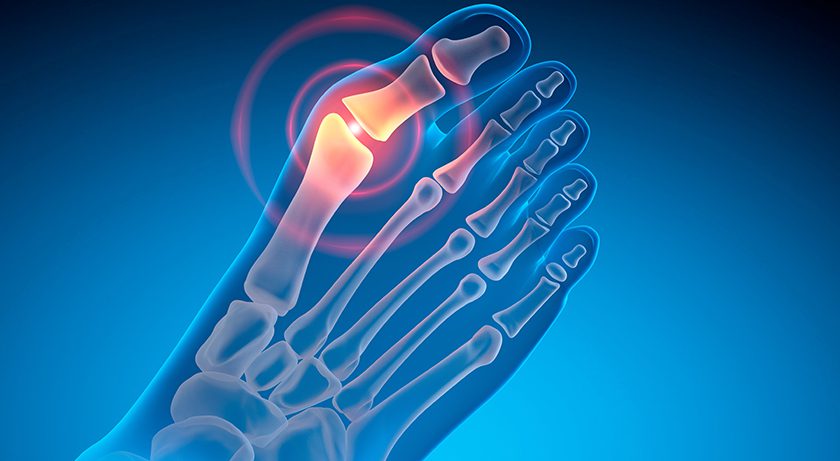

 Copy to clipboard
Copy to clipboard 
A streamlined O.R. is integral to an orthopedic surgery department that executes with precision and speed, factors that enhance patient care, boost staff satisfaction and increase cost savings. Surgeons and their teams can’t do it alone, though. Orthopedic companies play an essential role in helping their customers achieve this vision.
This article explores the practical strategies that device companies should take to help make the O.R. simple and efficient. This work involves standardizing processes, minimizing equipment complexity, creating an ergonomic environment and optimizing staffing efficiency. These are fundamental steps that should never be overlooked.
Standardizing Processes
A key step in simplifying the O.R. is the implementation of standardized processes. By establishing uniform surgical protocols for preoperative, intraoperative and postoperative procedures, healthcare facilities create a clear roadmap for their teams. Checklists for routine tasks ensure that essential steps are completed, reduce the risk of errors and enhance overall efficiency.
The adoption of condensed surgical kits and single-use instruments is an excellent example of how technology plays a critical role in creating standardized processes. Orthopedic companies that adopt these practices curtail unnecessary variations in supplies and contribute to a more streamlined workflow.
Minimizing Complexity in Equipment
Today’s orthopedic O.R. is filled with innovative implants, instruments and enabling technology, but the product advancements must also be easy to use. Orthopedic companies need to simplify technology integration and reduce the learning curve for surgeons and their staff. Investing in interoperable technology solutions can also ensure seamless communication between devices, eliminating potential disruptions during procedures.
Hospitals are cost-conscious and look closely at equipment redundancies. They assess the necessity of multiple similar devices and are more likely to invest in technology that offers multifunctional capabilities. Orthopedic companies must exert their expertise in these situations and show value analysis committees how they can help streamline technology choices and eliminate excess products and equipment.
Creating a Simple and Ergonomic Environment
The physical environment of the O.R. can significantly impact efficiency. Organizing the layout for optimal efficiency involves strategically placing equipment and supplies. A clutter-free and ergonomic workspace reduces the time spent searching for tools and contributes to a smoother workflow.
This is where optimizing the sub-sterile area of the O.R. is key. Everyday items should be available right outside the O.R., not in a storage area downstairs or in sterile processing. Consigned inventory can be a logistical nightmare for device companies. It cannot be overstated that companies must deliver their equipment properly packaged and ready for use to assist with a smooth orthopedic procedure.
Optimizing Staffing and Training
Current events highlight why efficient staffing is critical to a simplified O.R. Orthopedics experienced staffing shortages during the pandemic, and projections indicate that there won’t be enough surgeons and nurses to keep up with surgical demand as baby boomers seek orthopedic care. Hospitals must cross-train staff members to ensure versatility of skills in the O.R. Streamlining roles ensures that each team member has a clear and defined purpose and contributes to a more efficient environment by optimizing the staff-to-patient ratio and eliminating redundancy.
Orthopedic companies can assist with these efforts by simplifying the technologies and techniques that are used for specific procedures. Further, they can help train surgical teams through robust educational offerings. Virtual reality, augmented reality and mixed reality tools are expected to increase access to education.
Closing Comments
The journey toward a simplified O.R. involves a multifaceted approach.
Orthopedic companies that implement these strategies can assist their customers in creating an environment that enhances patient care and elevates the overall experience for their dedicated staff. In the pursuit of efficiency, simplicity emerges as a guiding principle, ensuring that every aspect of the O.R. contributes to the seamless delivery of surgical care.
A streamlined O.R. is integral to an orthopedic surgery department that executes with precision and speed, factors that enhance patient care, boost staff satisfaction and increase cost savings. Surgeons and their teams can’t do it alone, though. Orthopedic companies play an essential role in helping their customers achieve this vision.
...
A streamlined O.R. is integral to an orthopedic surgery department that executes with precision and speed, factors that enhance patient care, boost staff satisfaction and increase cost savings. Surgeons and their teams can’t do it alone, though. Orthopedic companies play an essential role in helping their customers achieve this vision.
This article explores the practical strategies that device companies should take to help make the O.R. simple and efficient. This work involves standardizing processes, minimizing equipment complexity, creating an ergonomic environment and optimizing staffing efficiency. These are fundamental steps that should never be overlooked.
Standardizing Processes
A key step in simplifying the O.R. is the implementation of standardized processes. By establishing uniform surgical protocols for preoperative, intraoperative and postoperative procedures, healthcare facilities create a clear roadmap for their teams. Checklists for routine tasks ensure that essential steps are completed, reduce the risk of errors and enhance overall efficiency.
The adoption of condensed surgical kits and single-use instruments is an excellent example of how technology plays a critical role in creating standardized processes. Orthopedic companies that adopt these practices curtail unnecessary variations in supplies and contribute to a more streamlined workflow.
Minimizing Complexity in Equipment
Today’s orthopedic O.R. is filled with innovative implants, instruments and enabling technology, but the product advancements must also be easy to use. Orthopedic companies need to simplify technology integration and reduce the learning curve for surgeons and their staff. Investing in interoperable technology solutions can also ensure seamless communication between devices, eliminating potential disruptions during procedures.
Hospitals are cost-conscious and look closely at equipment redundancies. They assess the necessity of multiple similar devices and are more likely to invest in technology that offers multifunctional capabilities. Orthopedic companies must exert their expertise in these situations and show value analysis committees how they can help streamline technology choices and eliminate excess products and equipment.
Creating a Simple and Ergonomic Environment
The physical environment of the O.R. can significantly impact efficiency. Organizing the layout for optimal efficiency involves strategically placing equipment and supplies. A clutter-free and ergonomic workspace reduces the time spent searching for tools and contributes to a smoother workflow.
This is where optimizing the sub-sterile area of the O.R. is key. Everyday items should be available right outside the O.R., not in a storage area downstairs or in sterile processing. Consigned inventory can be a logistical nightmare for device companies. It cannot be overstated that companies must deliver their equipment properly packaged and ready for use to assist with a smooth orthopedic procedure.
Optimizing Staffing and Training
Current events highlight why efficient staffing is critical to a simplified O.R. Orthopedics experienced staffing shortages during the pandemic, and projections indicate that there won’t be enough surgeons and nurses to keep up with surgical demand as baby boomers seek orthopedic care. Hospitals must cross-train staff members to ensure versatility of skills in the O.R. Streamlining roles ensures that each team member has a clear and defined purpose and contributes to a more efficient environment by optimizing the staff-to-patient ratio and eliminating redundancy.
Orthopedic companies can assist with these efforts by simplifying the technologies and techniques that are used for specific procedures. Further, they can help train surgical teams through robust educational offerings. Virtual reality, augmented reality and mixed reality tools are expected to increase access to education.
Closing Comments
The journey toward a simplified O.R. involves a multifaceted approach.
Orthopedic companies that implement these strategies can assist their customers in creating an environment that enhances patient care and elevates the overall experience for their dedicated staff. In the pursuit of efficiency, simplicity emerges as a guiding principle, ensuring that every aspect of the O.R. contributes to the seamless delivery of surgical care.

You are out of free articles for this month
Subscribe as a Guest for $0 and unlock a total of 5 articles per month.
You are out of five articles for this month
Subscribe as an Executive Member for access to unlimited articles, THE ORTHOPAEDIC INDUSTRY ANNUAL REPORT and more.
JC
John Cunningham is an independent rep with 25 years experience in orthopedic trauma, spine and total joint sales. He lives in Chicago with his wife, and enjoys reading and running marathons.







